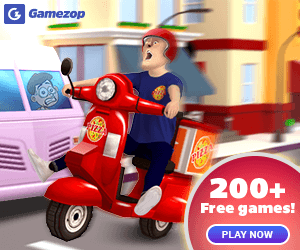
Walking Pneumonia in Children: Signs and Symptoms to Watch For
1 month ago | 5 Views
When a child experiences a cough or develops a sore throat, it is not always necessary to take them to the nearest hospital. They may continue to attend school and engage in outdoor activities with their peers. However, these symptoms can indicate the presence of walking pneumonia, a colloquial term for a prevalent bacterial infection. This condition represents a mild variant of pneumonia, which is a significant respiratory illness impacting the lungs. While a hospital visit may not be required for children with walking pneumonia, timely medical intervention is crucial.
What is walking pneumonia?
Walking pneumonia, also referred to as atypical pneumonia, is a specific kind of lung infection. According to paediatrician Dr Preetha Joshi, it represents a milder variant of pneumonia that frequently impacts children. Research published in the Pneumonia Journal in 2015 indicates that approximately 120 million cases of pneumonia are reported annually among children under the age of five, resulting in at least one million fatalities worldwide.

What causes walking pneumonia in kids?
Walking pneumonia in children is primarily attributed to mycoplasma pneumonia, as stated by the American Lung Association. This particular bacterium is transmitted through respiratory droplets when an infected individual coughs or sneezes, according to expert insights. Unlike conventional bacteria, mycoplasma pneumonia does not possess a rigid cell wall, which can sometimes render it resistant to antibiotic treatment. While it can affect individuals of all ages, it predominantly impacts children between the ages of 5 and 17, as well as young adults, according to the US Centers for Disease Control and Prevention.
Additionally, Dr. Joshi notes that other bacteria, such as chlamydia pneumonia, along with certain viruses like influenza and respiratory syncytial virus, can also lead to walking pneumonia in children.
What are the symptoms of walking pneumonia in kids?
Children may have symptoms like diarrhoea, wheezing or vomiting, as per the CDC. Other signs of walking pneumonia in kids are:
- Cough that can last for weeks
- Sore throat
- Headache
- Fatigue, especially while engaging in sports or physical activity.
- Low-grade fever
- Chest pulling in during breathing is a sign that your child is working hard to breathe.
- Sometimes fever may be accompanied by chills.
What are the stages of walking pneumonia in kids?
Walking pneumonia in children progresses through several distinct stages:
The initial stage is the incubation period, which lasts between one to four weeks. During this time, the bacteria proliferate in the respiratory tract without manifesting any noticeable symptoms.
Following the incubation period, symptoms begin to emerge gradually.
A persistent dry cough typically develops, often intensifying during the night. Additionally, the child may experience chest discomfort and varying degrees of shortness of breath.
Although walking pneumonia is generally mild, it has the potential to escalate into more severe pneumonia if not addressed. An expert notes that in such instances, one may observe more severe respiratory symptoms, including an increased cough, chest pain, and difficulty in breathing. At this stage, hospitalization may be necessary for the child.
In the recovery phase, symptoms generally improve within a few weeks with appropriate treatment; however, the cough may persist for several weeks or even months.
How is walking pneumonia in kids diagnosed?
Walking pneumonia in children is identified through a comprehensive medical history and thorough physical examination.
An assessment of the respiratory system may indicate the presence of pneumonia, prompting the physician to request a chest X-ray.
Additionally, mucus samples may be obtained from the nasal passages or throat to confirm the diagnosis.
Blood tests are also available to evaluate the body's immune response to Mycoplasma.

How to treat walking pneumonia in kids?
Walking pneumonia treatment involves the following:
1. Symptomatic treatment
In cases of fever, medications such as paracetamol and ibuprofen may be administered. The physician may also prescribe cough syrups and recommend steam inhalation, according to the expert. Certain children may experience hyperreactive airway disease, a condition characterized by heightened sensitivity of the airways to irritants. "In these instances, it is essential for your child to receive a bronchodilator, a medication that facilitates easier breathing," states Dr. Joshi.
2. Definitive treatment
The only effective and definitive treatment for mycoplasma pneumonia is the administration of antibiotics following diagnosis. According to the expert, a typical recommendation for treating walking pneumonia in children is a course of oral antibiotics lasting between 5 to 10 days. In certain cases, the duration of treatment may extend beyond 10 days.
3. Treatment in severe cases
Certain children may require respiratory assistance, which can include oxygen therapy as well as non-invasive or invasive ventilation. The expert states, "The infection may not respond to the initial antibiotics and could necessitate the use of more potent antibiotics for an extended period. In cases where it progresses to severe pneumonia, a regimen of steroids may be administered."
4. Personal hygiene measures
Following the initiation of antibiotic treatment, the likelihood of your child transmitting the illness to you or other family members diminishes. It is essential, however, to ensure that they practice proper hand hygiene and cover their mouth and nose with their elbow when coughing or sneezing, as advised by the expert. Additionally, verify that your children are current with their immunizations to protect against other infections.
The expert notes that a complete recovery for your child may take between two to six weeks. It is important not to discontinue the antibiotic treatment until the prescribed course is fully completed.
Walking pneumonia is relatively common among children. Although it is generally mild, it is crucial to treat it to prevent progression to more severe pneumonia. Always administer medications to your child only after consulting with a healthcare professional.
Read Also: Congenital Heart Disease Uncovered: A Doctor’s Perspective on Treatment and Prevention
Get the latest Bollywood entertainment news, trending celebrity news, latest celebrity news, new movie reviews, latest entertainment news, latest Bollywood news, and Bollywood celebrity fashion & style updates!
HOW DID YOU LIKE THIS ARTICLE? CHOOSE YOUR EMOTICON!
#




















